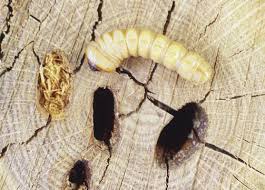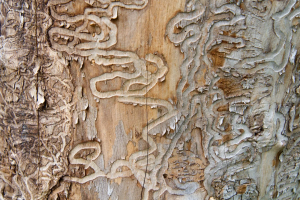I wanted to raise awareness about an issue that I have been seeing in my professional work over the last few weeks. This year we have noticed an exceptional amount of Red Oaks and Magnolia trees that died following last summer’s intense heat and drought. Now it is becoming apparent that many of our Pecan trees are showing signs of severe decline, likely from the same drought stress. It’s becoming evident that these trees, an iconic part of our local landscape, are suffering massively, especially in the upper parts of their crowns. In some cases, they have died completely.
We typically consider Pecans to be extremely resilient as their deep tap root allows them to access ground water in even the most severe of droughts. But the environmental stress of the past 4 years seems to be catching up with our Pecans.
It’s important to remember that Pecan trees can be late bloomers, sometimes not budding until mid-May. However, what I am seeing suggests that many will not bud and recover this year. A telling sign of severe damage is the presence of numerous sucker sprouts growing just below the leafless sections of the canopy. These sprouts often indicate that the tree is sending its energy into latent buds underneath the bark, because the vascular connections to the upper portions of the tree have died.
If your Pecan tree’s upper canopy has not yet leafed out, it’s crucial to consult with a professional arborist. They can assess the tree and confirm whether the upper sections are indeed dead and advise on the best course of action.
I have been using a drone to examine the branch tips to look for live buds. You can see in the photo above that the buds are gray and appear lifeless. Many of the trees I have examined show no bud swelling in their upper canopy.
It is my experience that when a Pecan begins to suffer from decline in the upper canopy, reversing this decline can be very difficult. Without significant intervention, Pecans suffering from large scale top dieback will continue to decline until they are dead.
The loss of these trees not only affects the aesthetics of our neighborhoods but also impacts local biodiversity and the overall health of our urban environment. If you are concerned about a Pecan tree in your area, please do not delay in seeking expert advice. It might still be possible to save these trees or manage their decline in a way that minimizes further risk. It is also important to the safety of my employees and other tree service workers that these dead limbs be taken care of as quickly as possible. The longer dead limbs are left in the tree, the more brittle, unsafe, and difficult they are to work with.
TL/DR: If you have a Pecan tree, go outside and look at it. If it looks like the top of the tree doesn’t have any leaves, call your Arborist and have them check it out.
Like the Drone shots? Get the same drone we use here: https://amzn.to/4bcNK7l
Ultimate Starter Drone: https://amzn.to/4djSkm3
Author: Andrew Anstrom
Board Certified Master Arborist





